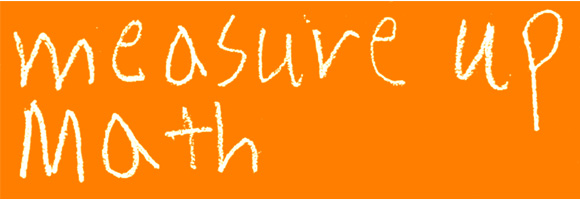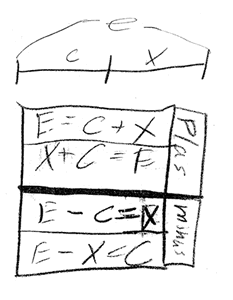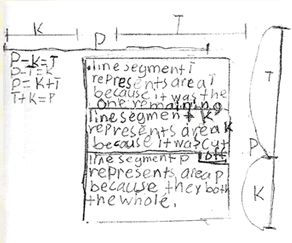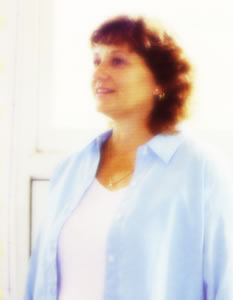
MEASURE UP
Russia is renowned for linking math concepts to real-world situations, creating a context of understanding with an emphasis on critical thinking and problem solving. An innovative mathematics curriculum in Hawai‘i, called Measure Up, is adapting this Russian ideology for first and second graders. Students in this new program are raising the academic standard and excelling in algebraic concepts and skills, writes Nicole T. Boynton.
 Mathematics instruction in the U.S. is dominated by memorization and drill, despite a growing consensus that these approaches are ineffective. In contrast, “Russian students don’t cite rules for solving math problems; they understand them – correcting their errors through conceptual understanding,” says Jean Schmittau, associate professor of education in the School of Education and Human Development at Binghamton State University of New York.
Mathematics instruction in the U.S. is dominated by memorization and drill, despite a growing consensus that these approaches are ineffective. In contrast, “Russian students don’t cite rules for solving math problems; they understand them – correcting their errors through conceptual understanding,” says Jean Schmittau, associate professor of education in the School of Education and Human Development at Binghamton State University of New York.
Measure Up is based on the preliminary work of psychologists, educators and mathematicians in Krasnoyarsh, Russia, who were discouraged by low test scores during the 1950s. Instead of merely repackaging the same math, the researchers adapted a theory originally conceived in the 1930s by developmental psychologist Lev Vygotsky and V. V. Davydov, vice president of the Russian Academy of Education and head of the Russian Institute for General and Pedagogical Psychology. Initially banned by Stalin, the Vygotskian method is now used in 10 percent of the schools in Russia.
Research has shown that Russian students taught by this method have a profound grasp of mathematical structure, as well as the confidence and ability to extend their knowledge beyond instruction. Russian children with only three years of schooling are at a level comparable to high school and college students in the U.S.
COLD WAR AFTERMATH
Russia’s launch of Sputnik I on October 4, 1957 caught the world off guard, marking the dawn of the Space Age and the beginning of the technological race between the two superpowers. In response, U.S. lawmakers legislated more federal dollars for math and science to be taught in the nation’s schools – creating the impetus of the “New Math” movement.
By 1959, at the Royaumont Seminar (sponsored by the Organization for European Economic Cooperation), delegates gathered to discuss the formulation of a revolutionary curriculum to change the precepts of mathematics being taught in the West. The chief result of the seminar was the expansion of a U.S.-based New Math model to Western Europe abandoning traditional, Euclidian geometry in favor of German-based “motion” geometry.
 It seemed Sputnik divided the mathematical cosmos into two camps – Western and Eastern – reinforcing the escalating Cold War. According to Schmittau, “Russia was insulated under communism, they never went the way of New Math.”
It seemed Sputnik divided the mathematical cosmos into two camps – Western and Eastern – reinforcing the escalating Cold War. According to Schmittau, “Russia was insulated under communism, they never went the way of New Math.”
Barbara Dougherty Ph.D., director of mathematics for the Curriculum Research & Development Group (CRDG) at the University of Hawai‘i Education Laboratory School and the mastermind behind Measure Up, explains the criticism of the New Math movement, “If you look at the textbooks there are a lot of repetitive themes – what is taught in grade three will be taught again in grade four and reviewed again in grade six – instead of figuring out ways of combining or connecting concepts.”
Dougherty points to another drawback of New Math: poor execution, a disconnect between the mathematicians who developed the curriculum and the teachers who were working with children. She says, “When the New Math era started everyone thought that it would be a panacea. People who jumped on that bandwagon didn’t think about all the ramifications of the program.”
There is no question that math scores in the U.S. has lagged behind other developed nations. A recent UNICEF study compared the educational systems in the world’s richest countries, testing 14- and 15-yearolds in literacy, math and science. The results: South Korea and Japan ranked highest, while the U.S. placed 18th out of 24 nations. In the annual Brown Center “Report on American Education: 2000,” Tom Loveless reports that national and state testing programs show declines in math scores after the fourth grade, extending through high school. The middle-grade slump also appears on the most prominent international test, Trends in International Mathematics and Science Study (TIMSS).
BILATERAL RELATIONS
 Small pockets of research on the Vygotskian method have occurred across the U.S. Schmittau recently completed a three-year study, translating and teaching the Russian program to schools in the Northeast. According to Schmittau, the study demonstrates that the original Russian materials are teachable. “The program is so well-designed, one can see how concepts that are used in the first grade are used in higher math. Even though the material becomes considerably more difficult in higher grade levels, the children find it easier to learn. By the third grade, they were already solving problems found in high school textbooks.”
Small pockets of research on the Vygotskian method have occurred across the U.S. Schmittau recently completed a three-year study, translating and teaching the Russian program to schools in the Northeast. According to Schmittau, the study demonstrates that the original Russian materials are teachable. “The program is so well-designed, one can see how concepts that are used in the first grade are used in higher math. Even though the material becomes considerably more difficult in higher grade levels, the children find it easier to learn. By the third grade, they were already solving problems found in high school textbooks.”
Dougherty was skeptical when first approached by Russian mathematician Isak Proumin in 1999. “This is not a program we would have started on our own. I remember going home and telling my husband, ‘Wait until you see this program because there is no way this is for first graders; this must be for gifted Russian students.”
Despite her skepticism, Dougherty began an eighteen-month review of the research, and initiated the project with first graders in the 2001 school year. Rather than implementing the translated Russian text directly to the classroom, “We’ve taken their materials and created a more contemporary curriculum,” says Dougherty. “Because when the Russians first developed this they were working with seven- and eight-yearolds, and, in some cases, we are working with five-yearolds.”
The UH lab school on the Mānoa campus is ideal for documenting case studies on individual children – from kindergarten through grade twelve. Dougherty says, “The school allows the research to be very concentrated and cohesive because you are in control of all the variables.” Applicants are selected every year, not by grades or ability, but by their diversity. In fact, the student population reflects the geographic, cultural and ethnic diversity of the state’s population. Dougherty makes the important distinction that “these are not special kids. The research pool is heterogeneous, and there is no grouping within the group. Connections, a public charter school in Hilo, has students of just about every ethnicity, socioeconomic background, and a large number of special needs students.” Materials developed in the lab school are currently being used in 42 states and 6 foreign countries.
THE INTELLIGENTSIA
 Imagine a math class where first and second graders welcome their homework assignments, look forward to their lessons and eagerly raise their hands to discuss problems in front of the class. A second grade student scribbles “I love math” in her notebook, while another student congratulates his partner for a job well done.
Imagine a math class where first and second graders welcome their homework assignments, look forward to their lessons and eagerly raise their hands to discuss problems in front of the class. A second grade student scribbles “I love math” in her notebook, while another student congratulates his partner for a job well done.
Russia is renowned for linking math concepts to real-world situations, creating a context of understanding with an emphasis on critical thinking and problem solving. An innovative mathematics curriculum in Hawai‘i, called Measure Up, is adapting this Russian ideology for first and second graders. Students in this new program are raising the academic standard and excelling in algebraic concepts and skills, writes Nicole T. Boynton.
Confidence and pride are by-products of Measure Up – encouraged through reading, writing, speaking, critical thinking, and use of multiple representations (using a variety of tools, models and techniques).
The cornerstone of the Measure Up program is language and communication, both written and oral. Students take an active role in the classroom by presenting the methods they use to solve problems, writing corresponding equations on the board, taking notes and asking questions. The students, rather than the teacher, intervene to help solve problems and analyze each other’s work. “The teacher really takes a backseat. The students are held accountable. They are asked to be sophisticated speakers,” explains Dougherty.
First graders begin the school year by doing what comes naturally at that age: comparing and measuring objects around them – bottles, glasses and cups, and scales of different types. The students learn what can be compared, like two pens or pencils, and, how, by measuring for length and height. They learn the basic concept of “greater and less than.” They learn about area by comparing two pieces of paper of different shapes or the bottoms of containers, as well as about volume, by comparing containers with different amounts of water or rice.
By the third week, first grade students are asked to explain what they are comparing, and eventually a student will suggest writing sentences (such as, the area of the table is greater than the area of the door), then progress to assigning symbols. According to Dougherty, “They actually come up with the shorthand on their own – what Q represents, and that the area of Q is greater than the area of P.” Using the physical representation of area, mass or volume, first graders create their own story problems and corresponding statements.
“The surprising thing is that many people believe that if you don’t attach a number to it, kids won’t be able to get it, because most children begin school by learning to count,” Dougherty elaborates. “We thought they would be bothered by having all these symbols. Not a bit, especially because it is related directly to a physical representation.”
The first graders learn how to make two quantities they are comparing the same, by adding something to one side of the equation or taking away something from the other (the basis for addition and subtraction). Dougherty adds, “The really neat part is getting at the underlying understanding of addition and subtraction, it helps them understand these symbols.” Because the program is language based, students are also taught correct mathematical terminology. Dougherty says, “They learn the vocabulary: that you can write T=Q or Q=T by using the symmetric property of equality; and they are comfortable calling it that.” Numbers are introduced halfway through the first grade. A number line helps students visualize numbers and understand that in order to compare, the units they are comparing need to be consistent. Creating a number line with a spring scale using either 50, 100 or 200 gram weights – students begin using proportional reasoning to deduce that it takes two 50 units to make a single 100 unit.
Measure Up also emphasizes concurrent representation. Dougherty explains, “In a more conventional math program, kids will learn today’s lesson but they can’t understand how that’s connected to tomorrow’s lesson or how one chapter is related to the next. Here it is seamless, because they constantly use measurement. In grade three they will still be using what they learned in grade one.” One benefit is that because the students aren’t working with isolated concepts, there is residual learning and connectivity.
Dougherty illustrates, “When second grade students are asked what addition or subtraction means, they will explore all these different scenarios about how you might use it. And some students, even in grade two, will go back to these early concepts that the whole is divided into parts. That is very sophisticated: to be able to look at the components of part/whole relationships and abstract equations. They are thinking about the structural relationship of the different numbers with addition and subtraction.” The second grade students develop six to eight sound mathematical strategies for adding and subtracting.
The second graders also begin working with base numbers, eventually working up to a base-20 system. Furthermore, the second graders learn to categorize and solve algebraic equations. For example, students learn inverse operations and are able to write a fact team of related statements using three symbols, x, 4 and 7, to create the following equations: x + 4 = 7, 4 + x = 7, 7 – x = 4 and 7 – 4 = x.
POTENT FORCE
 “The aim of the Russian program goes beyond the mathematical development of these students, it is ultimately targeted to their cognitive development,” says Schmittau.
“The aim of the Russian program goes beyond the mathematical development of these students, it is ultimately targeted to their cognitive development,” says Schmittau.
Measure Up students are already showing a more sophisticated understanding of mathematical concepts compared to their peers: for example, no review has been necessary after each semester. Dougherty remarks, “in our program, by the middle of the first week of review, the kids come in asking ‘We’ve already done this, let’s do something new.” In addition, Dougherty believes the students accept the higher math concepts as normal. “You don’t get ‘It’s too hard’ or ‘I don’t know what to do’ because it is a natural part of the way they began mathematics.”
While interviewing students about equality, Dougherty asked, “How would you explain to a kindergartner what the equal sign is? After the first-graders finished rolling their eyes, they answered in these exact words, ‘that the quantities on both sides of the equal sign are the same amount.’ When we ask children who have not been in a program …they tell us, ‘this means that you have to find an answer.’ So it’s really a different depth of understanding.”
With hours of evaluation and a team of three researchers in each class, the Measure Up team is documenting the students’ performance to identify critical moments of learning. After the research phase, the results will be aligned with instruction for further development. CRDG implements a shadow technique to stay ahead of the other two schools involved in the project: Connections in Hilo and the University of Krasnoyarsk in Siberia, a development site in Russia, interested in the new research. “We create the lessons and implement them in our classroom with the research teams, then revise them. After Hilo gives us their feedback, they are revised again before they go to Russia,” says Dougherty.
Measure Up is currently recruiting schools to begin pilot studies for 2004. “We have three sites on the mainland with different demographics: Chicago, Atlanta and New Jersey” The team also plans to conduct extensive field testing in 2005 and 2006.
Measure Up materials will be available in about five years, including a compendium of research articles, student materials (textbooks and educational videos), a Web site and CD for parents, and eventually a teachers’ component. The parents of Measure Up students are strong advocates of the program; many are members of a volunteer group that will help author materials due out later this year. Although Schmittau already has the English translation of the Russian materials, she emphasizes that teachers need to be trained before implementing the program in the classroom.
According to Dougherty, “We have prophesied that by the end of grade six, the children in this program will have completed a rigorous algebra course.” The elementary students in Russia take high school-level geometry and higher-level algebra.
REVOLUTIONARY CHANGE

The Russian math program is currently available for school districts in the U.S. “We don’t have to reinvent the wheel; it is already there,” according to Schmittau. Yet Dougherty acknowledges that it will be difficult to convince math curriculum directors to accept the nontraditional approach of the program. “While we can show that children are achieving off the charts, it will be a challenge to create materials that will be palatable for school districts to look at.”
In the meantime, Measure Up is attracting worldwide attention: CRDG recently partnered with Ngee Ann Polytechnic, a public university in Singapore, to develop an introductory engineering mathematics course based on a curriculum created by CRDG, entitled Algebra I: A Process Approach. Ngee Ann selected the program to lead students to a deeper understanding of mathematics emphasizing problem-solving and communication strategies. The final product will be available for release in July 2004.
The Measure Up program is currently funded by grants from the National Science Foundation to study gender equity and diversity, such as examining how girls respond to a curriculum that is spatial- and discourse-based, as well as covering travel expenses to Russia to meet the original developers. Measure Up is also partnering with Pacific Resources for Education and Learning, recipients of a No Child Left Behind grant for teachers’ professional development and a grant to develop instructional materials with a technology component.
Russia is renowned for linking math concepts to real-world situations, creating a context of understanding with an emphasis on critical thinking and problem solving. An innovative mathematics curriculum in Hawai‘i, called Measure Up, is adapting this Russian ideology for first and second graders. Students in this new program are raising the academic standard and excelling in algebraic concepts and skills, writes Nicole T. Boynton.
Due to the program’s success, the Measure Up team is moving forward with a capital campaign to raise the anticipated $12 million required to expand the program. Dougherty surmises, “We believe if we can make this work, it is going to completely revolutionize mathematics education for young children.”
With a masters from the University of Missouri, Barbara Dougherty began her career in special education She became a math professor by serendipity While taking summer courses a math professor encouraged her to enter a graduate program in mathematics. She says, “I don t know what that professor saw in me, but every time I see him I thank him, It’s just awesome to help these kids really get it.”

